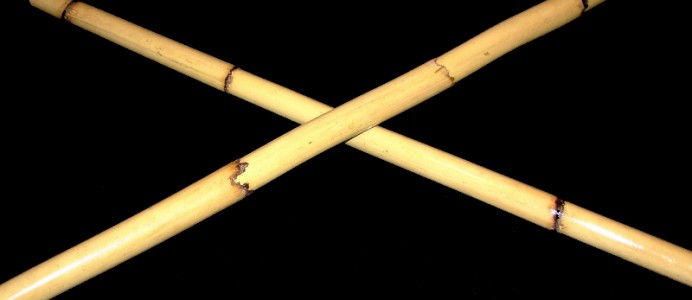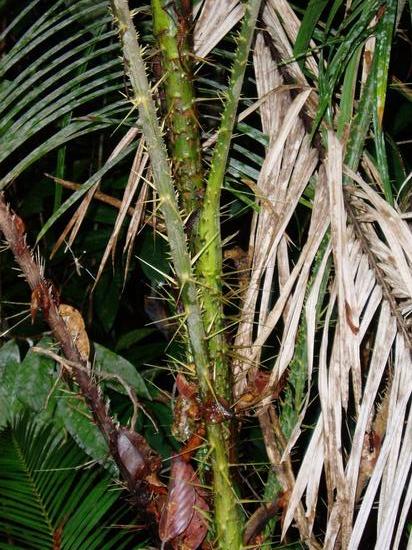Our new stick order has arrived! For those interested in learning more about those sticks and where they come from, here is some added info on rattan:
Rattan: a family composed of about 600 species and 13 genus of palm, native to tropical areas of Asia Africa and Australia- most of the worlds supply comes from Indonesia, the Philippines, Sri Lanka, Malaysia and Bangladesh. It grows from sea level to around 3,000 meters, and requires a mean annual temperature of 25 degrees, Celsius and about 2,000 mm of rain.
Structure: Although rattan is superficially similar to bamboo, its structure is solid rather then hollow and vary between palm like plants with stout trunks and vine like plants with spines that allow them to hook onto other plants for structural support. Stems are slender, between 2-5 cm across and have long internodes separating the leaves. The vines can grow to a hundred meters long, the spines help deter predators.
Uses: Rattan is used mainly for furniture building and baskets- the skin is peeled off and used as weaving material, and the inner core can be separated into wicker. It is valued due to its lightwieght durability, flexibility and resistance to splintering and is therefore useful for canes for martial arts, walking sticks, umbrella crooks and mallets for keyboard percussion.
Traditionally rattan was used for shelter building and weaving.
In some places the shoots are eaten and the sap was used as a dye and as a medicine.
Enviromental: Environmental issues around rattan are split two ways- on one hand, there is potential for it to be used as a crop that depends on rather then replaces trees, and harvesting it instead of surrounding species could help protect forest land. On the other hand, rattan is also over harvested (cutting the plant to young makes it difficult for it to re-sprout) affecting the forest ecosystem. In addition, Processing the plant involves the use of chemicals that strengthen the staves, and treat them against fungi and insects and have an adverse affect on the soil, air and water.
Sources: At maelstrøm we use rattan every single day for training. In the Filipino Martial Arts, it is the single most common training implement. It is the “stick” in “stick fighting”. And it is also widely used by many other martial arts for its utility – it frays but does not shatter or break dangerously; it absorbs impacts that do not transmit to the hand or arm like hard wood does; and it is relatively inexpensive. And it comes in a wide variety of diameters, lengths, and hardnesses.
But good rattan intended for fighting is hard to find. In case you are trying to find some for training, try Kombat Instruments Limited – we have sourced our fighting lumber from KIL for more than 10 years. Nothing better in our humble opinions.
(Reproduced under fair-use and with credit)



